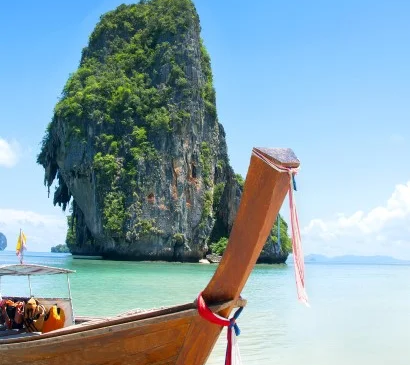Thailand
Overview of Thailand
1. Geography
- Capital: Bangkok
- Area: Approximately 513,120 square kilometers (198,120 square miles).
- Regions: Thailand is divided into four main regions: Central Thailand, Northern Thailand, Northeastern Thailand (Isan), and Southern Thailand, each with distinct cultures and landscapes.
- Landscape: The country features mountains in the north, fertile plains in the central region, and beautiful beaches and islands in the south.
2. Political Structure
- Thailand is a constitutional monarchy, with the King serving as the head of state and a Prime Minister as the head of government.
- The government is divided into the executive, legislative, and judicial branches, with a bicameral parliament consisting of the House of Representatives and the Senate.
3. Economy
- Thailand has a mixed economy, which is one of the largest in Southeast Asia, driven by exports, tourism, and agriculture.
- Key industries include electronics, automobiles, agriculture (rice, rubber, and seafood), and tourism, which is a significant contributor to the GDP.
- The country is also known for its vibrant street markets and handicrafts.
4. Culture
- Thai culture is influenced by Buddhism, which is the predominant religion in the country, and is reflected in its art, architecture, and festivals.
- The official language is Thai, and the country is known for its traditional music, dance, and cuisine, which includes dishes like Pad Thai, Tom Yum Goong, and Som Tum.
- Major festivals include Songkran (Thai New Year) and Loy Krathong, celebrated with water fights and lantern releases, respectively.
5. Tourism
- Thailand is one of the world’s most popular tourist destinations, known for its beautiful beaches, historic temples, and vibrant nightlife.
- Notable tourist attractions include Bangkok’s Grand Palace, Chiang Mai’s temples, the beaches of Phuket and Koh Samui, and the ancient city of Ayutthaya.
- The country offers a range of activities, from cultural experiences to adventure sports like scuba diving and trekking.
6. Transportation
- Thailand has a well-developed transportation network, including international airports, trains, buses, and ferries.
- Suvarnabhumi Airport (BKK) in Bangkok is a major international gateway.
- Within cities, transportation options include tuk-tuks, taxis, and the BTS Skytrain in Bangkok.
7. Climate
- Thailand has a tropical climate, characterized by three main seasons: the hot season (March to June), the rainy season (July to October), and the cool season (November to February).
- The cool season is generally considered the best time to visit, with pleasant temperatures and lower humidity.
8. Education and Healthcare
- Education in Thailand is compulsory for children aged 6 to 15, with a mix of public and private schools.
- The healthcare system includes public hospitals and private healthcare facilities, with ongoing efforts to improve access and quality of care.
Conclusion
Thailand is a diverse and welcoming country, offering a blend of modernity and tradition. Its rich cultural heritage, stunning natural beauty, and friendly people make it a captivating destination for travelers. If you have specific questions or need more information about a particular aspect of Thailand, feel free to ask!


